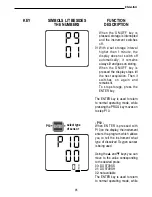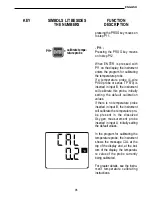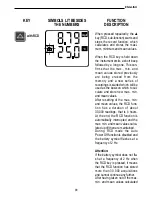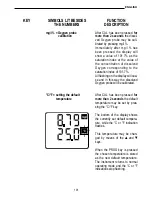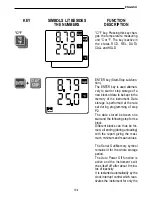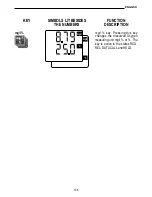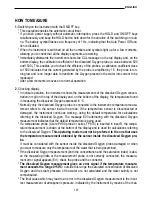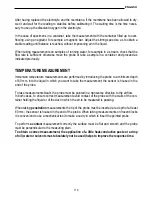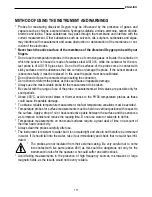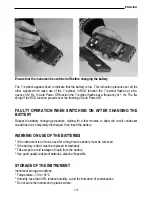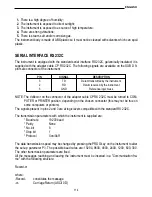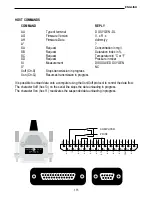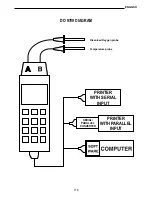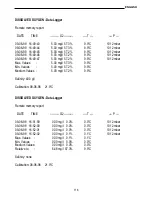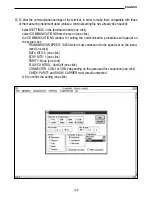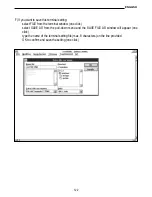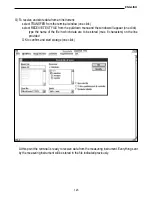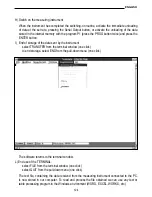
Serial Output, storage in the internal memory, unloading of stored data, erasing of the internal
memory, setting of the working parameters, enabling compensation of the salinity of liquids,
setting the default salinity and temperature, see the description of the instrument keyboard.
Attention when using the keyboard.
The use of the keys is relatively simple, but care must be taken to avoid setting it by mistake in an
undesired mode. Ensure that HOLD, RCD, REL, MAX, MIN, MED, Serial Out/Memory are not
displayed during normal operation.
MEASUREMENT OF DISSOLVED OXYGEN
To measure dissolved Oxygen, immerse the probe at least 80 mm. in the liquid to be measured.
It is essential for the sample to flow continuously past the probe membrane so as to prevent errors
in measurement due to the exhaustion of the oxygen in the part of the liquid sample in immediate
contact with the membrane. Check that the flow does not produce variations in reading.
When immersing the probe in the sample, check that no air bubbles are left in contact with the
membrane.
When connecting the Oxygen probe to the instrument, you must wait a few minutes for the probe to
give a steady and reliable reading; this time is necessary to allow the exhaustion of the dissolved
Oxygen in the electrolyte inside the probe.
With the probe inserted in the connector, even if the instrument is switched off, the probe is always
fed; in this condition the measurement may be taken immediately after switching on and once the
probe response has become stable.
Attention: since the probe is always fed, even when the instrument is switched off, to avoid
needless consumption of the electrolyte inside the probe it is advisable to disconnect it
from the instrument when you do not want to take measurements for long periods.
The probe needs to be recalibrated from time to time, inserting it in a liquid with saturation index
100%.
When you do not manage to calibrate the probe, or the reading is unstable, you must change the
probe or change the electrolyte and/or the membrane that covers the measuring electrodes (If you
are using a probe on which it is possible to replace the membrane).
The instrument gives the run-down probe signal for dissolved Oxygen probes with three electrodes.
This situation is detected by measuring a difference in potential of more than 300 mV between the
anode and the reference electrode (this difference in potential is close to zero and rises quickly
when the electrolytic solution inside the probe is running low). The instrument indicates the run-
down probe with the message E06.
ENGLISH
109

